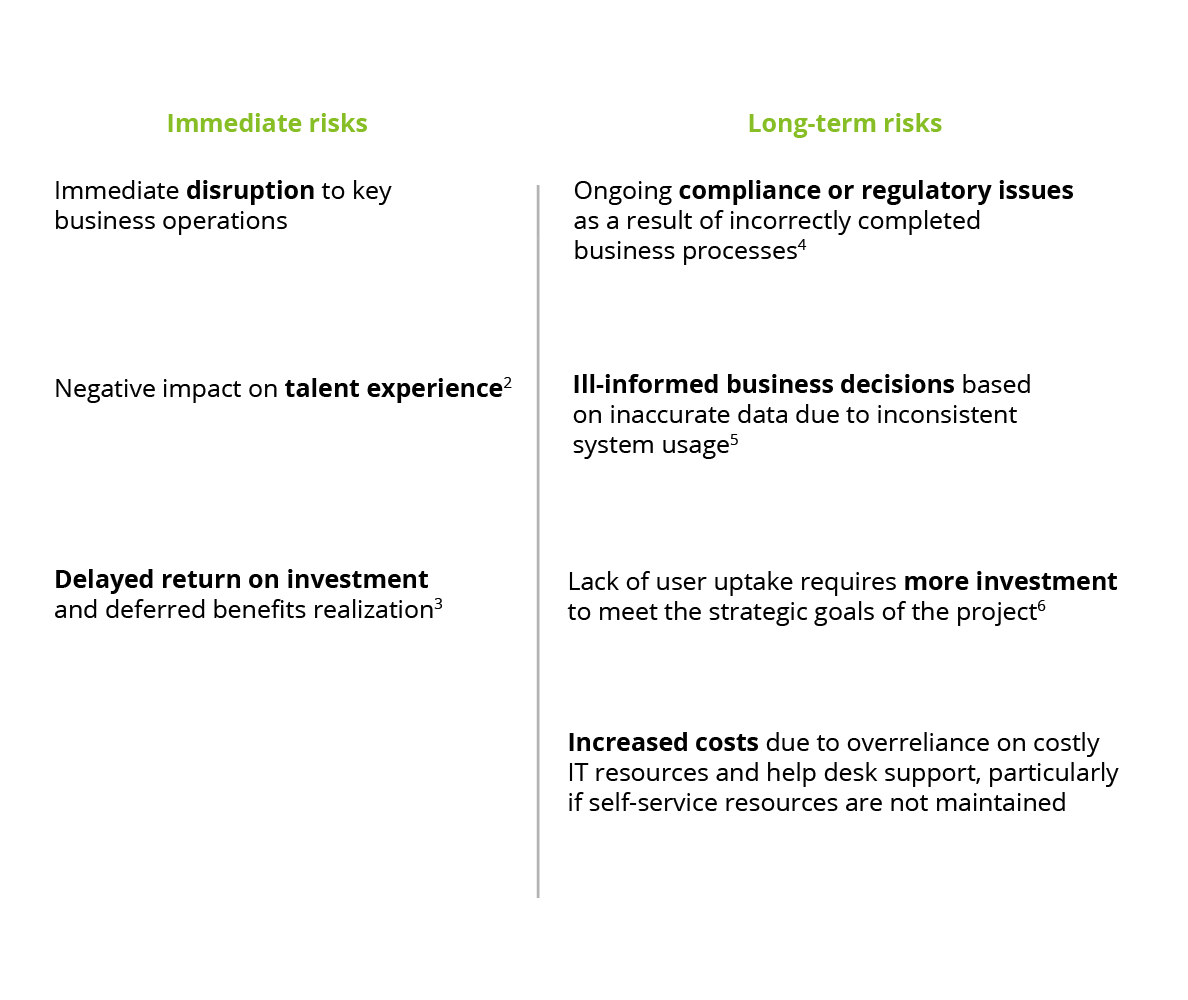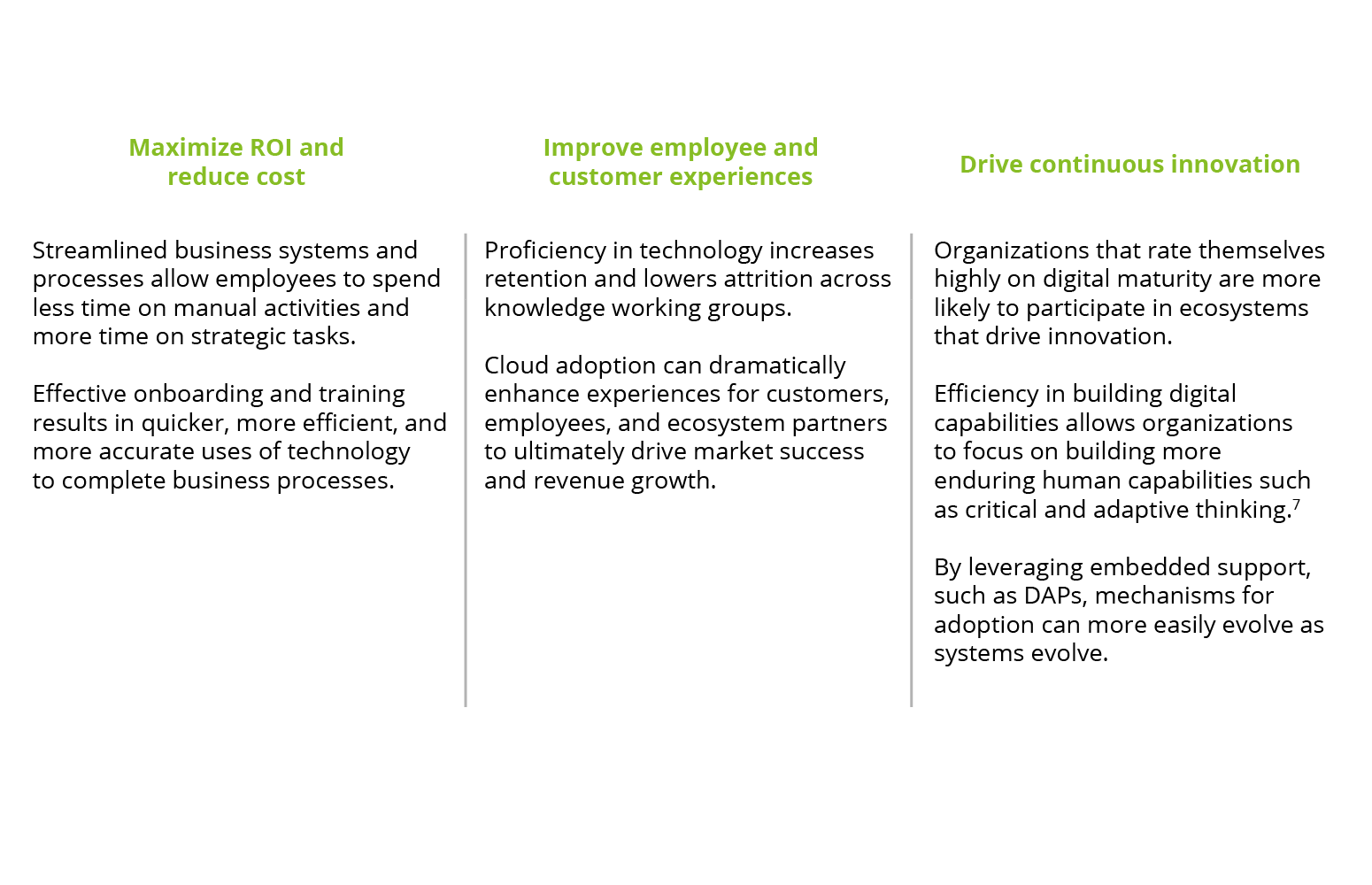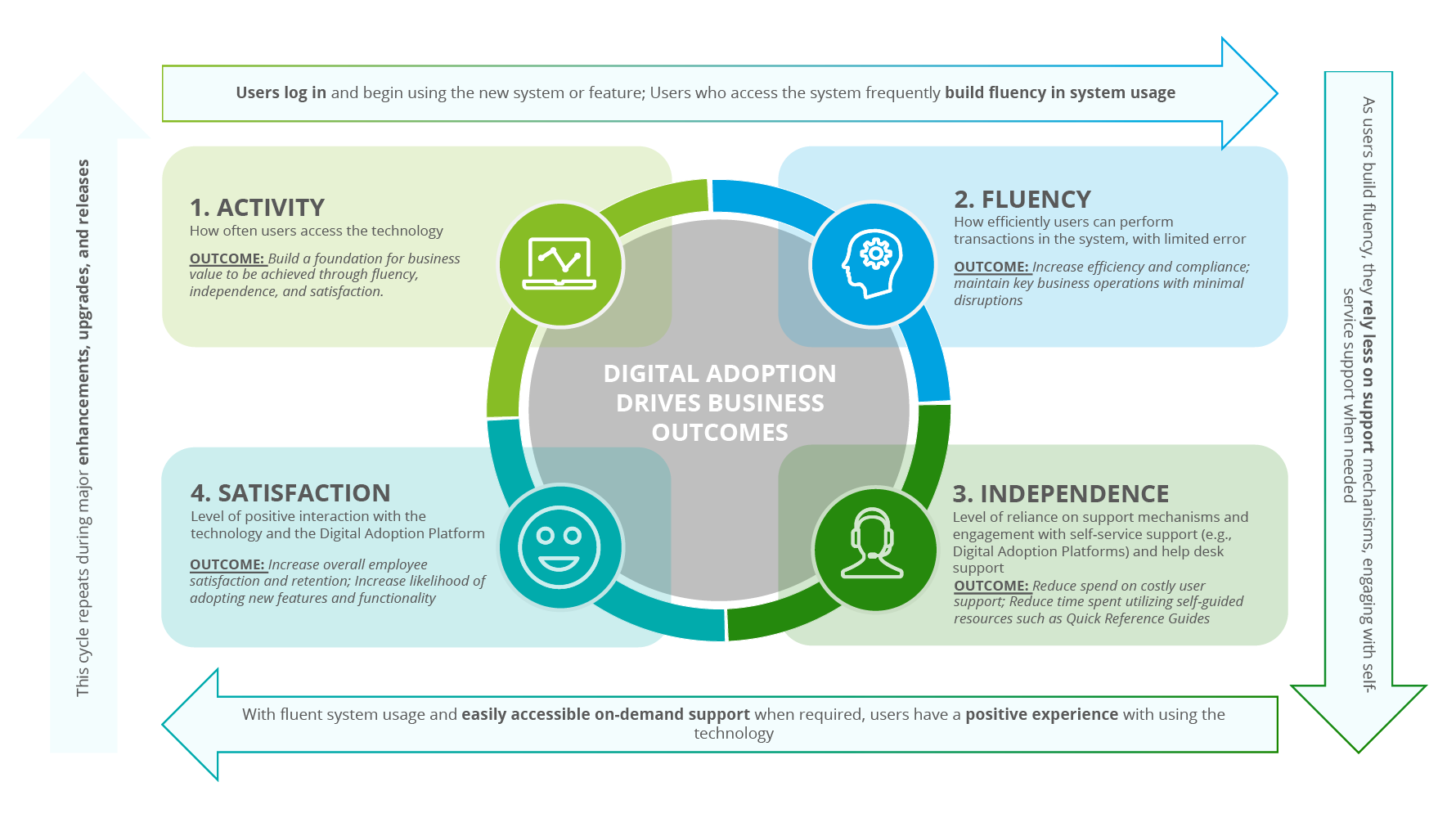Digital Adoption Management | Deloitte US has been saved
Authored by Nancy Vosburgh, Lee Merovitz, Chris Norman, Tracey Tucker, and Sara Kehoe
Imagine you’re sitting in a brand-new, Gen-7 race car revving your engine—waiting for the starting flag to wave. It’s an event you’ve been preparing for all year with hours of practice runs and strategy sessions with your pit crew, and you’re confident your car was designed and built by the best. Everything comes together at this moment so you can compete to win. Now imagine as the race kicks off, you notice the dashboard is without a speedometer, the engine temperature has no reading, and your crew chief is silent. How will you know when a tune-up is needed, or when to adjust course for the long 500-mile journey? Suddenly, you and your team are in the dark.
The risks of neglecting digital adoption
Driving without data and the insight it provides is unimaginable in NASCAR. So why would you do so in the digital world?
Historically, organizations have focused on digital adoption at go-live (the starting flag), but neglecting ongoing digital adoption presents risks that are avoidable (such as running out of gas). Understanding these risks can help organizations shift gears and drive into a new era of realized value from their digital investments.
Lack of digital adoption awareness when planning for go-live creates preventable challenges. Instead, organizations should plan with sustainment in mind. The adoption starting line begins with facing today’s exponential rate of change.
The increasingly complex tech landscape can feel like a full tank of gas without a GPS, brimming with opportunities without a clear path forward. To compete, companies must maximize effectiveness with the rise of artificial intelligence (AI) and the shift to cloud. By harnessing powerful technologies with insights and analytics, market leaders can make better decisions faster.
Along with changing technology is the future of work, and the race is not mutually exclusive. Sixty-one percent of leaders say poor employee digital experiences are likely to lead to resignations,1 while approximately 70% of a knowledge worker’s day is based on technology. With fewer employees to recruit and an ongoing need to develop and train workers, companies are having to do more with less—leaning into digital processes to close the gap.
The risks of neglecting digital adoption

Our 5-step approach to digital adoption management
How can organizations clear the path for digital adoption? The answer is a bumper-to-bumper approach, which combines data-driven leading practices with a toolset that provides clients with consumable data and visualizations to understand momentum over time—along with the ability to spot specific issues to address them quickly (such as an overheating engine). A robust digital adoption approach is like having your pit crew guiding you behind the wheel.
- Determine digital adoption metrics. Curate a portfolio of metrics from our framework based on project type and data available. Plan to capture data through multiple channels to get the full picture, including tech-based (for example, login rates), direct observation, and self-reporting.
- Set digital adoption goals. Partner with leaders and functional and technical subject-matter experts to select realistic and meaningful goals that demonstrate alignment with overall business objectives.
- Track digital adoption. Utilize data sources to capture and categorize data. Incorporate the planned measurement methods into ongoing change management workstreams, including communications, engagement, and learning. Leveraging a digital adoption platform (DAP) provides a more robust view of user behaviors.
- Analyze digital adoption. Interpret metrics through the lens of behavior science, informed assumptions, change impacts, and available anecdotal evidence. Form hypotheses regarding the root cause of adoption challenges based on the observable symptoms, and determine implications on overall strategic business goals.
- Take action and mobilize leaders. Determine interventions that can influence behavior and impact adoption factors. Mobilize leaders, change champions, and superusers to adopt change interventions and continuously set and monitor goals in their respective business areas, and revisit factors regularly to evaluate impact and adjust intervention plans.
Driving business transformation with digital adoption
Clients must focus on effectively managing digital adoption to get ahead of the curve and realize the business value of new technology. Investments in digital adoption pave the way to not only improve employee and customer experiences, but also maximize return on investment (ROI) and drive continuous innovation. Our experiences around the track have demonstrated benefits in these three key areas.

Digital Adoption Platform (DAP) Spotlight: 165,000+ Deloitte employees engage with a DAP across 90+ enterprise applications, facilitating points-of-need guidance and messages to improve end-user experience and drive adoption.
Digital adoption measurement framework
The strength of our approach is backed by decades of experience in the field. This digital adoption measurement framework has revealed that spotters must keep their eyes on four factors that are interdependent and build upon each other.

Follow along the track and you will find that users who access the system frequently build fluency in system usage. As they build fluency, they gain independence and rely less on support mechanisms. With fluent system usage and increased independence, users cross the finish line with a positive experience.
Measuring activity, fluency, independence, and satisfaction is both an art and a science. Data alone can lack context and be misleading without knowing the full landscape. Our team spots the hazards and opportunities ahead by interpreting the data and layering meaning over numbers so you, the crew chief, know what to pay attention to. Performing health checks with both quantitative and qualitative information compared against targets will indicate whether each of the four factors is on track—and help capture success and value.
The next time you find yourself at the beginning of a race, having the right pit crew, tools, and insights will drive readiness and prepare you for the road ahead. Stay tuned for the second part of our series, where we dive into how a strong digital adoption strategy can be the turbo boost needed to help eke out a win.
Authors:
Contributors:
- Michelle Mabery
- John Prescott
- Paige Parent
- Jacob Taylor
- Matt Dickerson
- Darcy Deane
- Tyler Johansson
- Jessica Levene
Endnotes:
1 WalkMe, The state of digital adoption 2022–2023, 2022.
2 Hartmut Hahn, “Why poor digital adoption hurts the employee experience,” Bloomberg, 2022.
3 WalkMe, The state of digital adoption report 2022–2023.
4 Apty, “Key business process compliance challenges,” March 10, 2022.
5 Deloitte Insights, “Data-driven change management using Transformation Intelligence™,” 2021.
6 WalkMe, The state of digital adoption report 2022–2023.
7 John Hagel, John Seely Brown, and Maggie Wooll, Skills change, but capabilities endure, Deloitte Insights, 2019.

